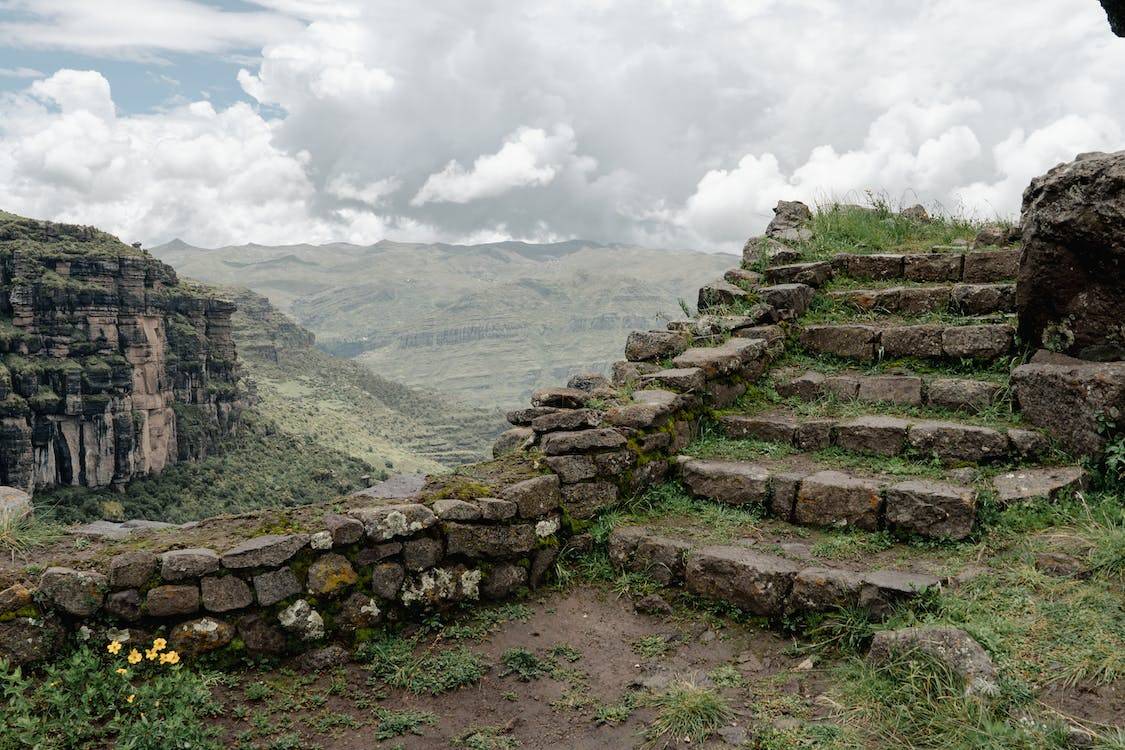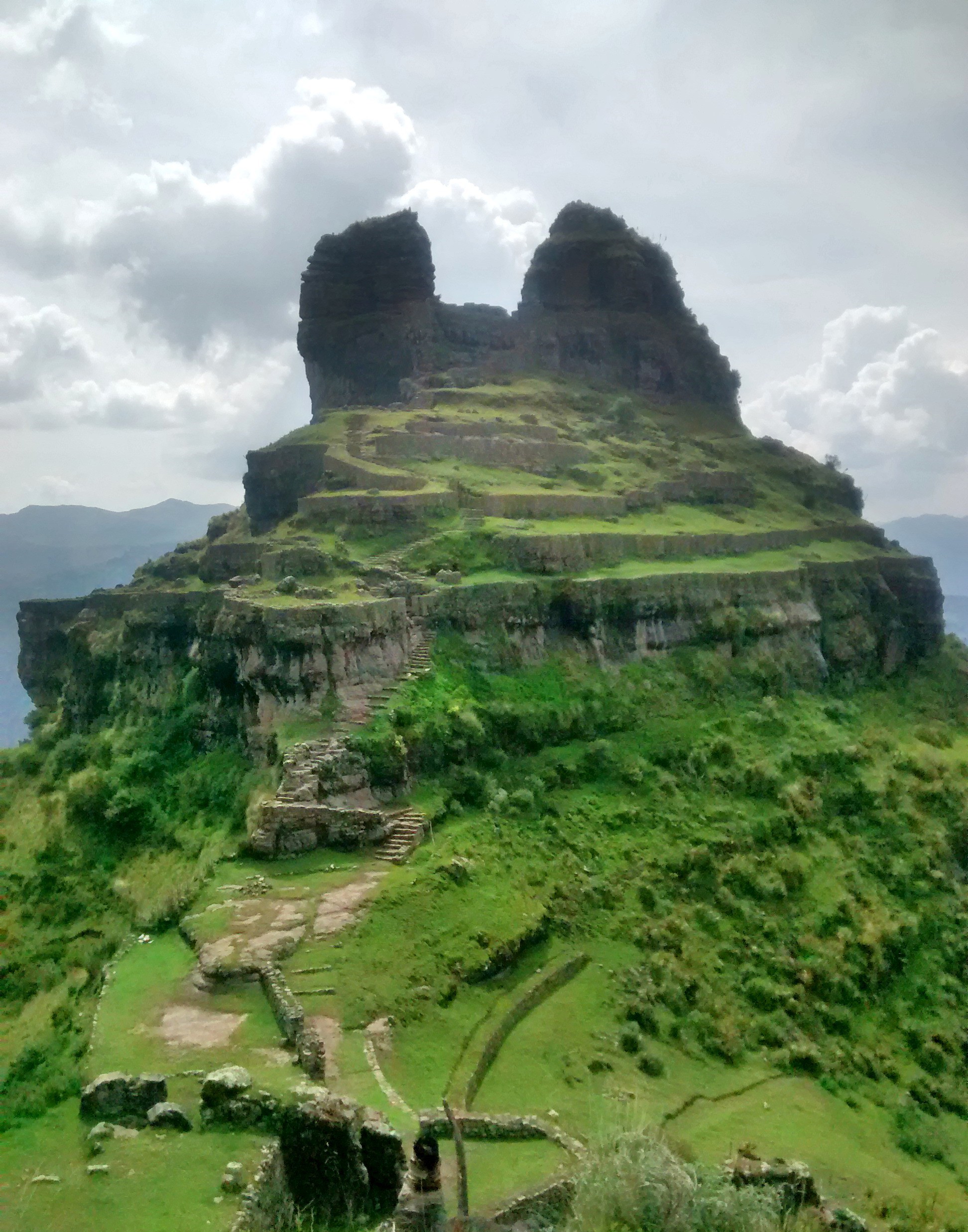Waqrapukara is a fascinating archaeological site perched high in the Andes mountains of Peru. Its name, meaning “horn fortress” in Quechua, hints at its distinctive horn-like peaks. This Incan site, less known than Machu Picchu, offers a glimpse into the Incan civilization’s architectural prowess. It features a complex of platforms, rooms, and an impressive fortress that overlooks the Apurímac River canyon. The remote location and the blend of natural and man-made structures create a unique and mysterious atmosphere that continues to intrigue visitors and scholars alike.
Get your dose of History via Email
Historical Background of Waqrapukara
Waqrapukara’s discovery by the wider world is relatively recent, with local communities long aware of its existence. The site gained attention in the early 21st century when explorers and archaeologists began to study it in depth. The Incas, known for their advanced engineering and architecture, built Waqrapukara. However, some evidence suggests pre-Inca cultures may have initially occupied the site. The fortress has seen various inhabitants over the centuries, including during the Spanish conquest of Peru. While not the scene of major historical events, its strategic location suggests it held significant importance.
The exact purpose of Waqrapukara remains a subject of debate among historians. Some believe it served as a military stronghold, while others argue it was a site of religious significance. The Incas were known to integrate their constructions with celestial events, and Waqrapukara’s alignment with the sun and stars may support the latter theory. Despite its remote location, the site shows signs of sophisticated social organization and could have been a hub for local governance or a retreat for Incan nobility.
Archaeological evidence indicates that Waqrapukara was built during the height of the Incan Empire. The Incas were master stonemasons, and the site’s construction showcases their skills. The fortress was likely built in stages, with different areas serving various functions. After the Spanish conquest, the site was abandoned and fell into obscurity, only to be rediscovered and appreciated centuries later for its historical value.
Waqrapukara’s rediscovery has sparked interest in its preservation and study. The Peruvian government and international organizations have taken steps to protect the site. Efforts are underway to understand its history better and ensure its survival for future generations. As tourism to Waqrapukara increases, there is a delicate balance between promoting its significance and protecting its integrity.
The site’s relative isolation has helped preserve its structures, but it also poses challenges for archaeological work. The harsh Andean environment and the site’s inaccessibility have limited extensive excavation and research. Despite these challenges, Waqrapukara continues to offer valuable insights into the Incan civilization and its mastery of landscape and architecture.

About Waqrapukara
Waqrapukara stands as a testament to Incan engineering. The site is a complex of terraces, plazas, and buildings carved into the limestone rock. The fortress is the centerpiece, with its two horn-like peaks giving the site its name. The Incas utilized the natural topography to create a formidable defensive structure. They also constructed a network of paths and staircases to navigate the steep terrain.
The construction methods of Waqrapukara reflect the Incan mastery of stonework. They used a technique called ashlar masonry, where stones are cut to fit together without mortar. This method not only provided stability against earthquakes but also created a visually seamless structure. The Incas sourced local materials, including limestone and andesite, to construct the site, blending it naturally with the surrounding landscape.
Architectural highlights of Waqrapukara include its main gate, which features a double-jamb doorway, a characteristic of important Incan sites. Inside, there are numerous enclosures that may have served as residences, storage rooms, or ceremonial spaces. The site also contains a series of ceremonial platforms, which could have been used for religious rituals or astronomical observations.
The layout of Waqrapukara is strategic, with the fortress providing panoramic views of the surrounding valley. This vantage point would have been crucial for surveillance and defense. The Incas also constructed an intricate water management system, with channels and cisterns to collect and distribute water throughout the site, demonstrating their advanced understanding of hydraulics.
Despite its rugged location, Waqrapukara’s design and construction exhibit a high level of sophistication. The site’s integration with the natural environment and its functional diversity showcase the Incas’ ability to adapt their architectural practices to the challenges of the Andean landscape.
Theories and Interpretations
Several theories about Waqrapukara’s purpose and significance have emerged over time. Some scholars suggest it was a military outpost, guarding against potential invaders. Its strategic position and defensive features support this theory. Others propose that it was a religious sanctuary, with its platforms and alignment with celestial bodies indicating a spiritual use.
Mysteries surround Waqrapukara, particularly regarding its remote location and the reason for its construction. The site’s inaccessibility raises questions about its role in the Incan Empire. Some speculate that it may have been a place of exile or punishment, while others believe it was a retreat for the elite, away from the bustling cities.
Interpretations of Waqrapukara have to match historical records with archaeological findings. The lack of written records from the Incan period means that much of the site’s history is pieced together from the physical evidence left behind. This includes the architecture itself, as well as artifacts found at the site.
Dating Waqrapukara has involved various methods, including carbon dating of organic materials found on-site. These techniques have helped establish a timeline for the construction and use of the site. However, the exact dates remain subject to ongoing research and debate.
The study of Waqrapukara is an ongoing process, with new discoveries and interpretations adding to our understanding of the site. As research continues, the history and purpose of Waqrapukara may become clearer, shedding light on this enigmatic fortress in the clouds.
At a glance
Country: Peru
Civilization: Inca
Age: Estimates suggest construction occurred during the 15th century AD
Conclusion and Sources
Reputable sources used in the creation of this article include:
- Wikipedia: https://en.wikipedia.org/wiki/Waqrapukara

